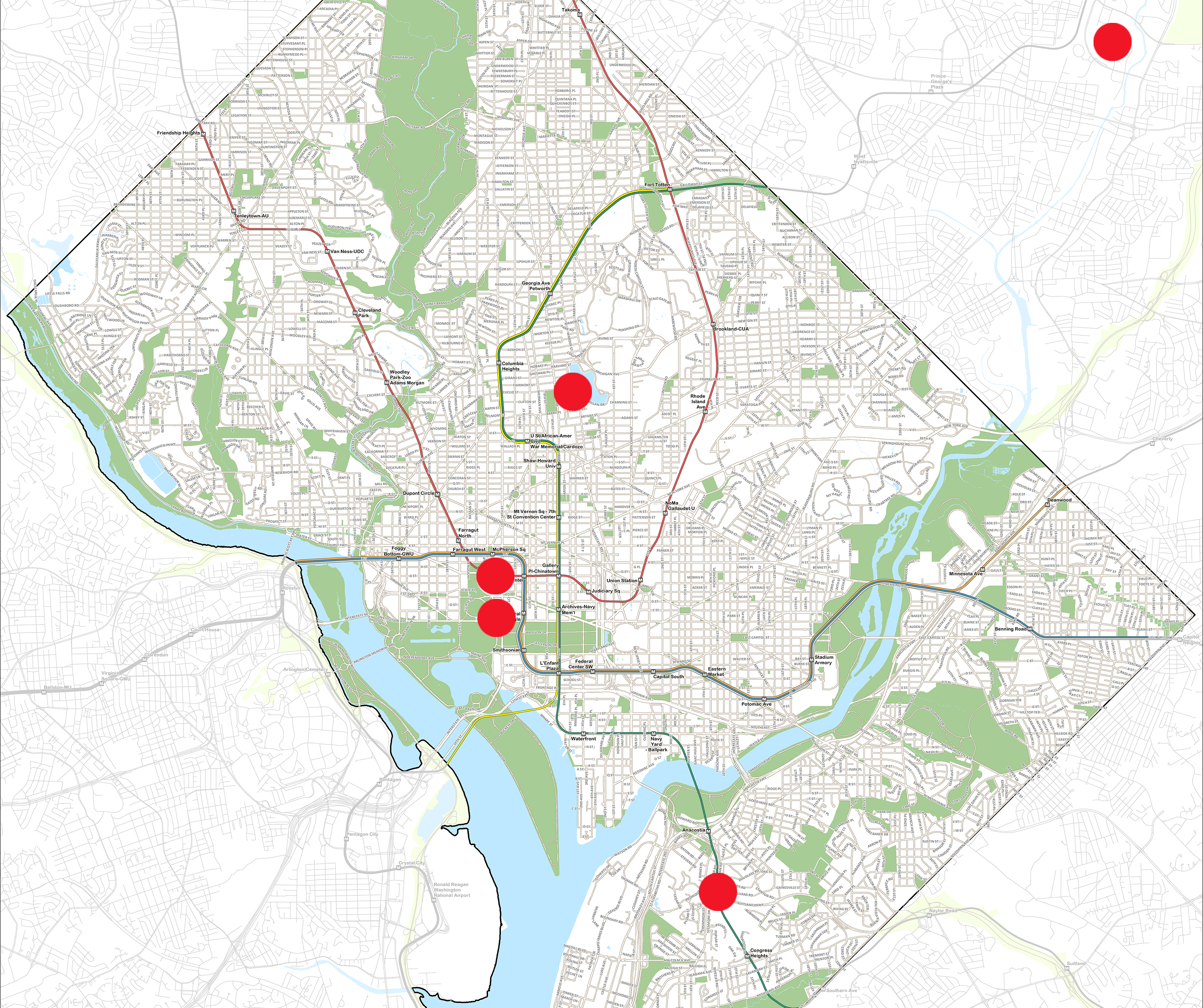Urban Meteorological Observations
UrbanNet is the successor to DCNet. It uses sensors to provide continuous high-resolution meteorological measurements of air temperature, relative humidity, wind speed and direction, atmospheric pressure, incoming and outgoing longwave and shortwave radiation, infrared temperature, precipitation, wet bulb globe temperature, turbulence and heat flux. As improved measurements of urban heat stress and precipitation trends are crucial for an array of planning activities, UrbanNet also employs precipitation gauges using both a tipping bucket and a higher precision weighing gauge, the same one used in the U.S. Climate Reference Network.
New instruments include black globe thermometers to assist with monitoring urban heat stress, atmospheric pressure, incoming and outgoing short- and long-wave radiation and infrared temperature. Ceilometers and 3D lidars that take urban boundary layer measurements and monitoring cameras will be deployed in future phases to assist with both quality assurance of data and monitoring any special weather conditions. Current sites have co-located Doppler LiDARs in collaboration with NOAA/CSL and Howard University. These provide vertical profiles of wind components, wind direction and turbulence information in the lower part of the atmosphere, in addition to boundary layer height.
Urban Fluxes of hazardous atmospheric materials
Urban fluxes of hazardous atmospheric materials from routine, accidental or intentional sources, such as pollutants, nuclear accidents/fall out, greenhouse gases, hazardous chemicals and others, are important to understand for emergency management and other applications. In the next stage of instrumentation, UrbanNet is incorporating measurements of both hazardous materials and fluxes to better quantify urban hazardous material emissions. The results of this project play a key role in evaluating and improving hazardous atmospheric material flux inventories by utilizing observations in an inverse modeling system using the HYSPLIT model. This is an important component of the Urban Atmospheric Monitoring and Modeling System (Urban-AMMS).
Results from this project will provide an improved understanding of urban fluxes and the transport, dispersion and uncertainty that can be applied to ecological modeling. ARL will share this evidence-backed information with emergency managers and local and regional data users. Ultimately, this project will provide an improved understanding of atmospheric hazardous materials in the Mid-Atlantic region.










